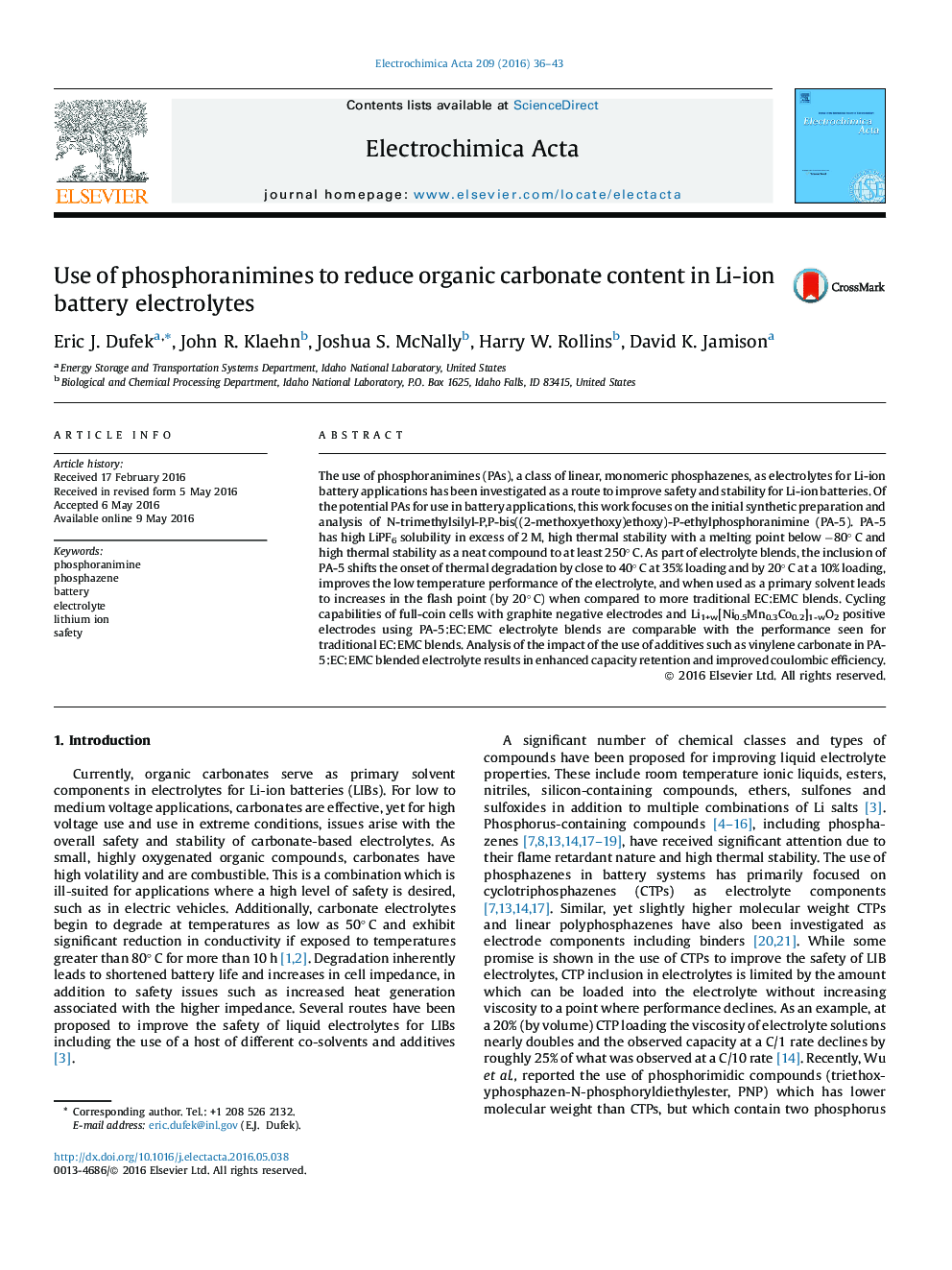| Article ID | Journal | Published Year | Pages | File Type |
|---|---|---|---|---|
| 6606664 | Electrochimica Acta | 2016 | 8 Pages |
Abstract
The use of phosphoranimines (PAs), a class of linear, monomeric phosphazenes, as electrolytes for Li-ion battery applications has been investigated as a route to improve safety and stability for Li-ion batteries. Of the potential PAs for use in battery applications, this work focuses on the initial synthetic preparation and analysis of N-trimethylsilyl-P,P-bis((2-methoxyethoxy)ethoxy)-P-ethylphosphoranimine (PA-5). PA-5 has high LiPF6 solubility in excess of 2 M, high thermal stability with a melting point below â80° C and high thermal stability as a neat compound to at least 250° C. As part of electrolyte blends, the inclusion of PA-5 shifts the onset of thermal degradation by close to 40° C at 35% loading and by 20° C at a 10% loading, improves the low temperature performance of the electrolyte, and when used as a primary solvent leads to increases in the flash point (by 20° C) when compared to more traditional EC:EMC blends. Cycling capabilities of full-coin cells with graphite negative electrodes and Li1+w[Ni0.5Mn0.3Co0.2]1-wO2 positive electrodes using PA-5:EC:EMC electrolyte blends are comparable with the performance seen for traditional EC:EMC blends. Analysis of the impact of the use of additives such as vinylene carbonate in PA-5:EC:EMC blended electrolyte results in enhanced capacity retention and improved coulombic efficiency.
Related Topics
Physical Sciences and Engineering
Chemical Engineering
Chemical Engineering (General)
Authors
Eric J. Dufek, John R. Klaehn, Joshua S. McNally, Harry W. Rollins, David K. Jamison,
